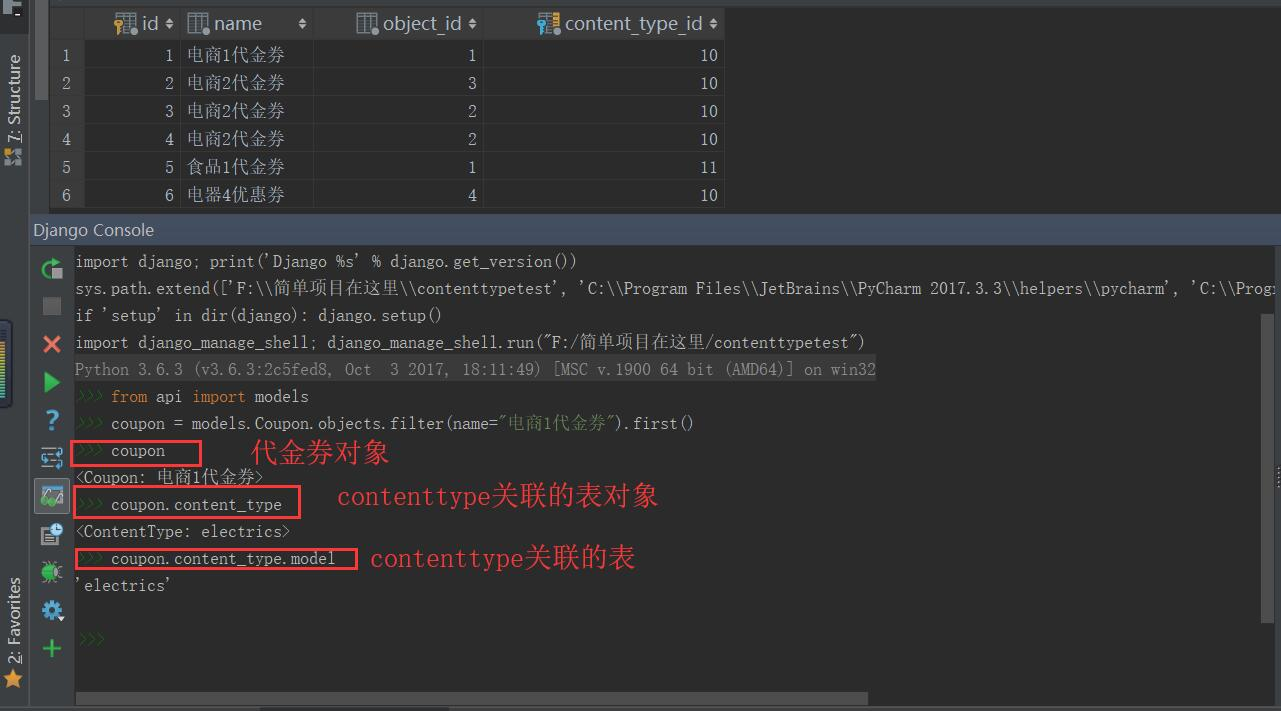Using django's contentType table, you can find a simple process where there are multiple foreign keys in a table: From: https://blog.csdn.net/aaronthon/article/details/81714496
contenttypes is an application built into Django that tracks the corresponding relationships between all apps and model s in a project and records them in the ContentType table.
Once the table structure of the models.py file is written, a django_content_type table is automatically generated in the database after data is migrated through the makemigrations and migrate commands, such as the tables we wrote in models.py:
from django.db import models
class Electrics(models.Model):
"""
id name
1 Hitachi refrigerator
2 Samsung TV
3 Swan washer
"""
name = models.CharField(max_length=32)
class Foods(models.Model):
"""
id name
1 Bread
2 Roasted Duck
"""
name = models.CharField(max_length=32)
class Clothes(models.Model):
name = models.CharField(max_length=32)
class Coupon(models.Model): # Special Relations Table
"""
id name electric_id food_id cloth_id more... # Each additional table adds an additional field to the structure of the relationship table.
1 General coupon null null null
2 Refrigerator full voucher reduction 2 null null
3 Bread Carnival null 1 null
"""
name = models.CharField(max_length=32)
electric = models.ForeignKey(to='Electrics', null=True)
food = models.ForeignKey(to='Foods', null=True)
cloth = models.ForeignKey(to='Clothes', null=True)
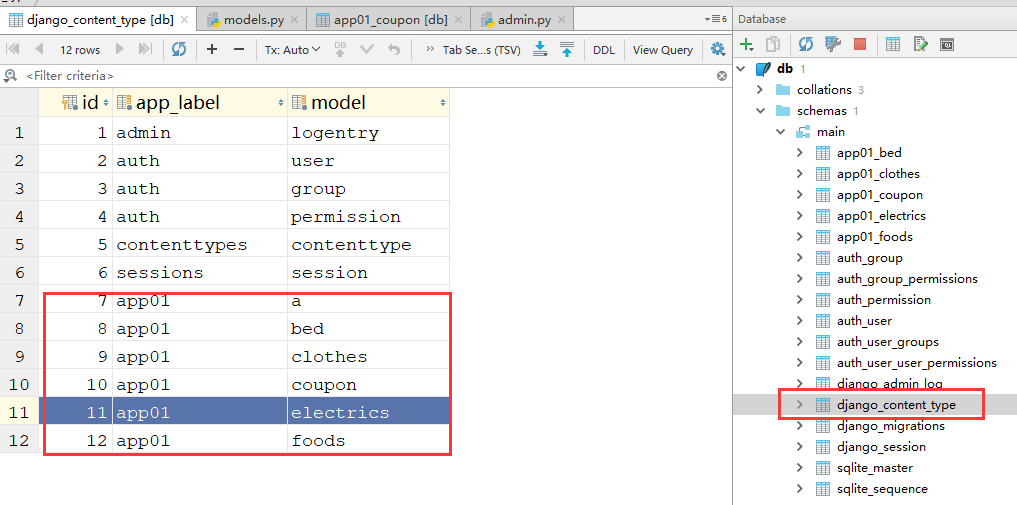
If it is a generic coupon, then all ForeignKeys are null, if only certain goods, then the corresponding goods ForeignKey records the id of the goods, and the unrelated records are null.But there's a problem with this: there are so many categories of goods in practice, and it's likely that they will continue to increase. There will be more and more foreign keys in the coupon table, but only one or more of them will be used for each record.
contenttypes applications
This is a good solution by using the special field GenericForeignKey provided in the contenttypes application.Just take the following three steps:
Define the ForeignKey field in the model and associate it with the ContentType table.Usually this field is named "content_type"
Define the PositiveIntegerField field in the model to store the primary key in the associated table.Usually this field is named "object_id"
Define the GenericForeignKey field in the model and pass in the names of the two fields above.
To make it easier to query the coupons for a commodity, we can also define the reverse relationship in the commodity class through the GenericRelation field.
Sample code: models.py file:
from django.db import models
from django.contrib.contenttypes.models import ContentType
from django.contrib.contenttypes.fields import GenericForeignKey, GenericRelation
class Electrics(models.Model):
name = models.CharField(max_length=32)
price = models.IntegerField(default=100)
coupons = GenericRelation(to='Coupon') # For reverse queries, no table fields are generated
def __str__(self):
return self.name
class Foods(models.Model):
name = models.CharField(max_length=32)
price=models.IntegerField(default=100)
coupons = GenericRelation(to='Coupon')
def __str__(self):
return self.name
class Clothes(models.Model):
name = models.CharField(max_length=32)
price = models.IntegerField(default=100)
coupons = GenericRelation(to='Coupon')
def __str__(self):
return self.name
class bed(models.Model):
name = models.CharField(max_length=32)
price = models.IntegerField(default=100)
coupons = GenericRelation(to='Coupon')
class Coupon(models.Model):
"""
Coupon
id name content_type_id object_id_id
//Mei Man Minus Coupon 9 (electrics) 3
//Pig's feet get one free coupon 10*2
//Antarctic quilt 200 minus 50 coupons 11 1
"""
name = models.CharField(max_length=32)
content_type = models.ForeignKey(to=ContentType,on_delete=models.CASCADE) # Since step 1 does not have a direct foreign key relationship with the associated table, we first find the related table by taking this step
object_id = models.PositiveIntegerField() # step 2 #The id of the corresponding record of the associated table is stored
content_object = GenericForeignKey('content_type', 'object_id') # The step 3 object.content_object gets the merchandise record object associated with this coupon object directly.
def __str__(self):
return self.nameNote: ContentType only works with 1-to-many relationships!!!And that many tables have multiple ForeignKey fields.
Data migration, adding data to each table
Clothes, electrical, bedding, food tables
After adding, data migration, Python management.py makemigrations and python management.py migrate
Create records and queries
from django.shortcuts import render, HttpResponse
from api import models
from django.contrib.contenttypes.models import ContentType
def test(request):
if request.method == 'GET':
# The ContentType table object has the model_class() method and gets the corresponding model
content = ContentType.objects.filter(app_label='api', model='electrics').first() # Table name lowercase
cloth_class = content.model_class() # cloth_class is equivalent to models.Electrics
res = cloth_class.objects.all()
print(res)
# Create a discount record for Samsung TV (id=2)
s_tv = models.Electrics.objects.filter(id=2).first()
models.Coupon.objects.create(name='TV coupons', content_object=s_tv)
# Query which item the coupon (id=1) is bound to
coupon_obj = models.Coupon.objects.filter(id=1).first()
prod = coupon_obj.content_object
print(prod)
# Query all coupons for Samsung TV (id=2)
res = s_tv.coupons.all()
print(res)
Summary: When a table is associated with multiple tables FK and only one or n of the multiple FKs can be selected, contenttypes app can be used to define only three fields.
Create Records
The structure of the relationship table
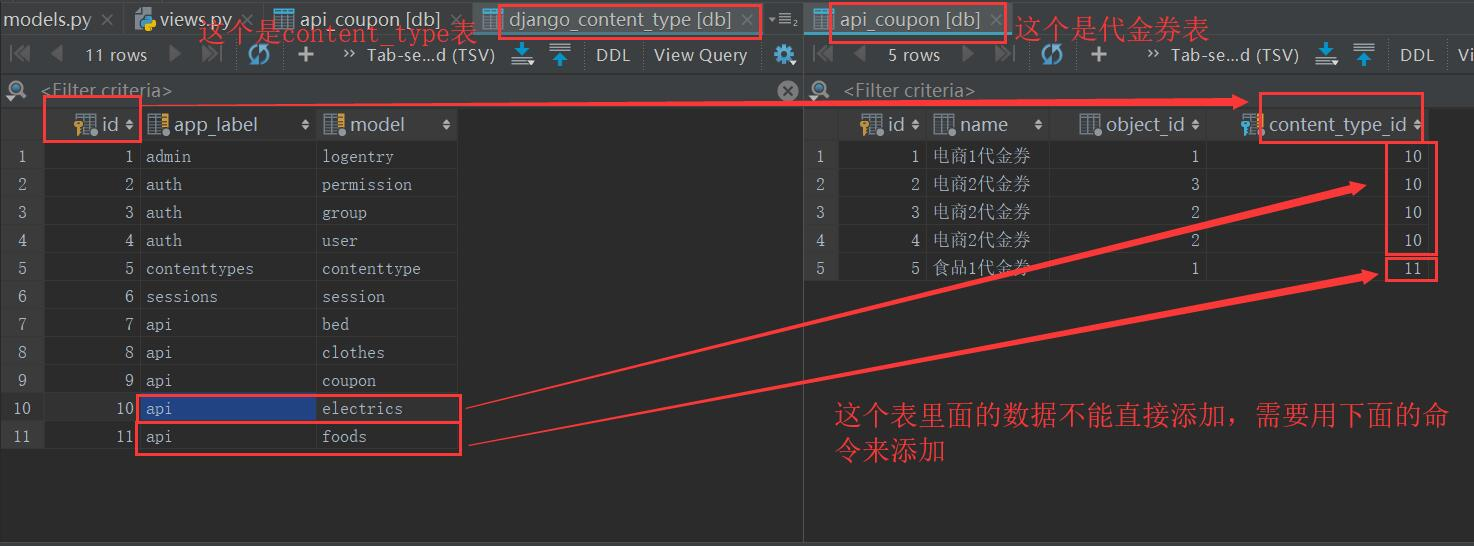
Use grammar to record relationships.
Add mode 1:
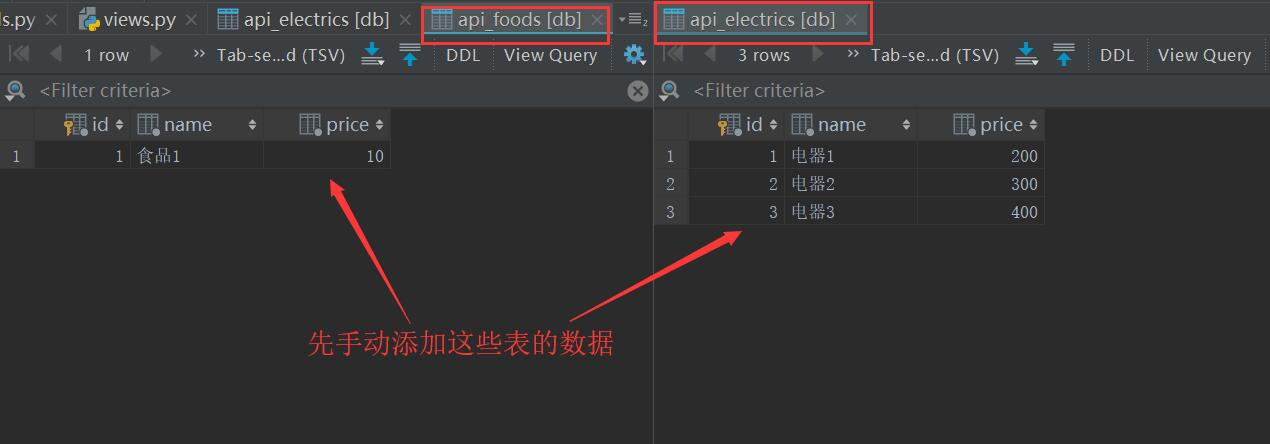
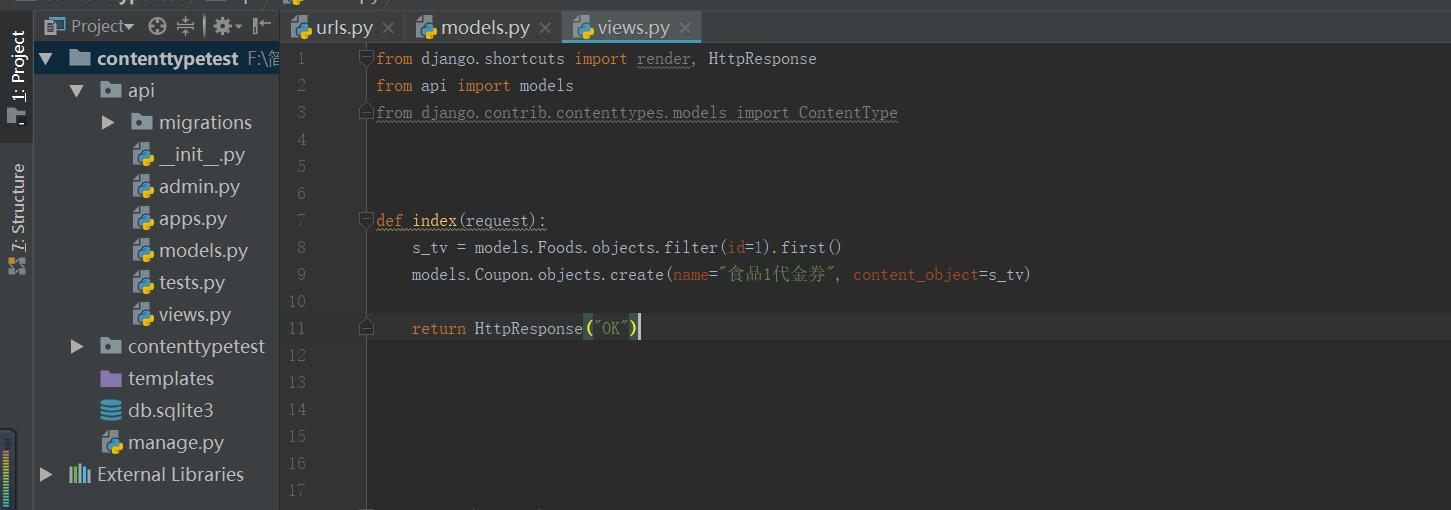
Next use postmen s to send requests
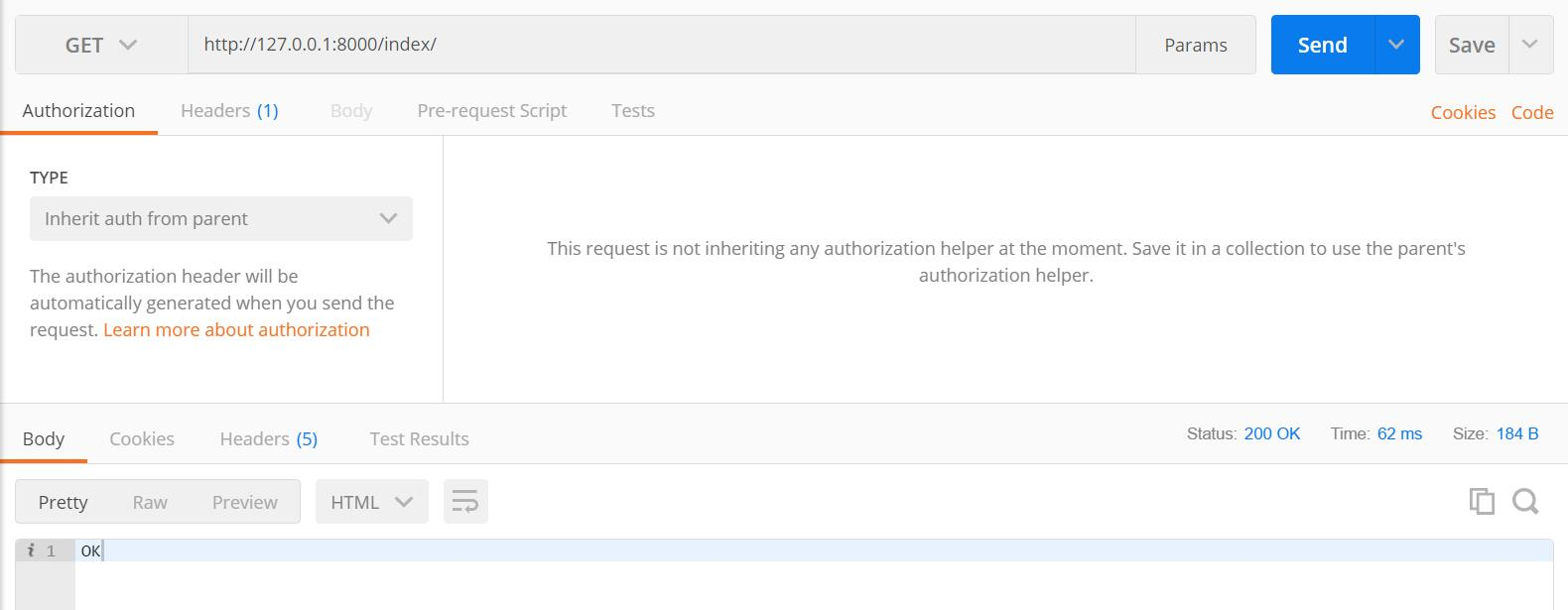
The voucher table data is then added
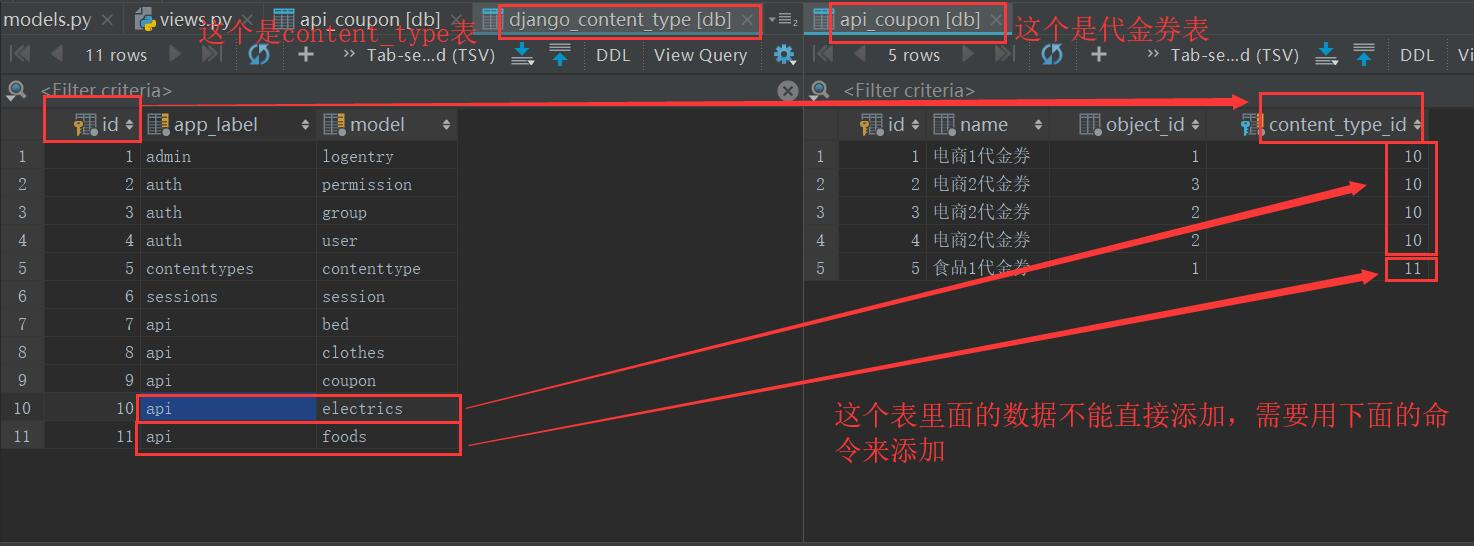
Add mode 2:
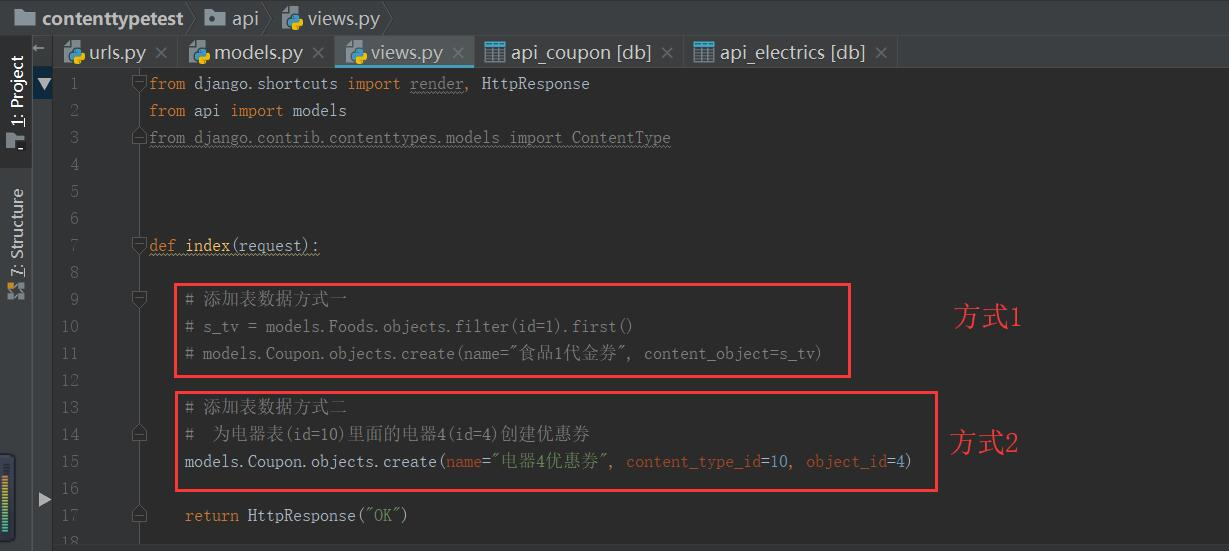
Send request results through postmen s
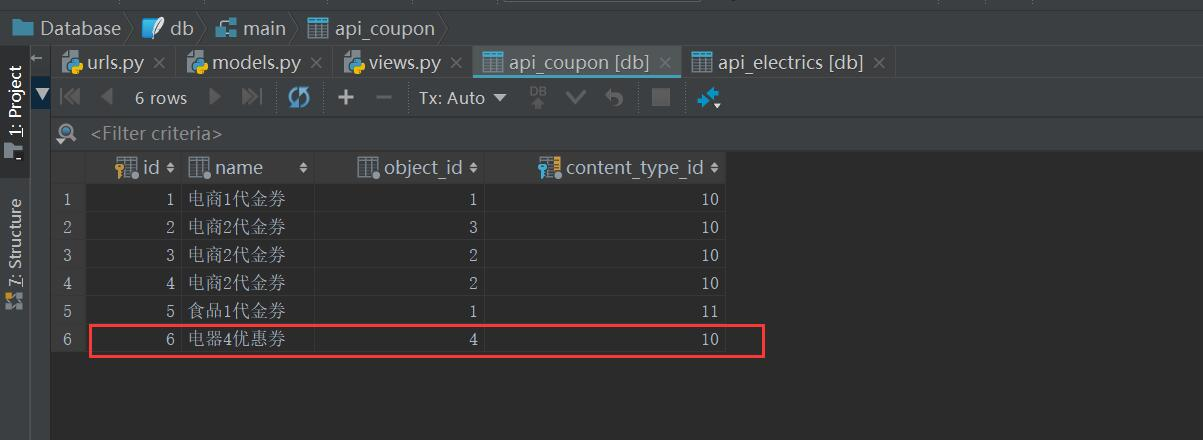
- Query records
Query voucher information for name="E-commerce 1 voucher"

